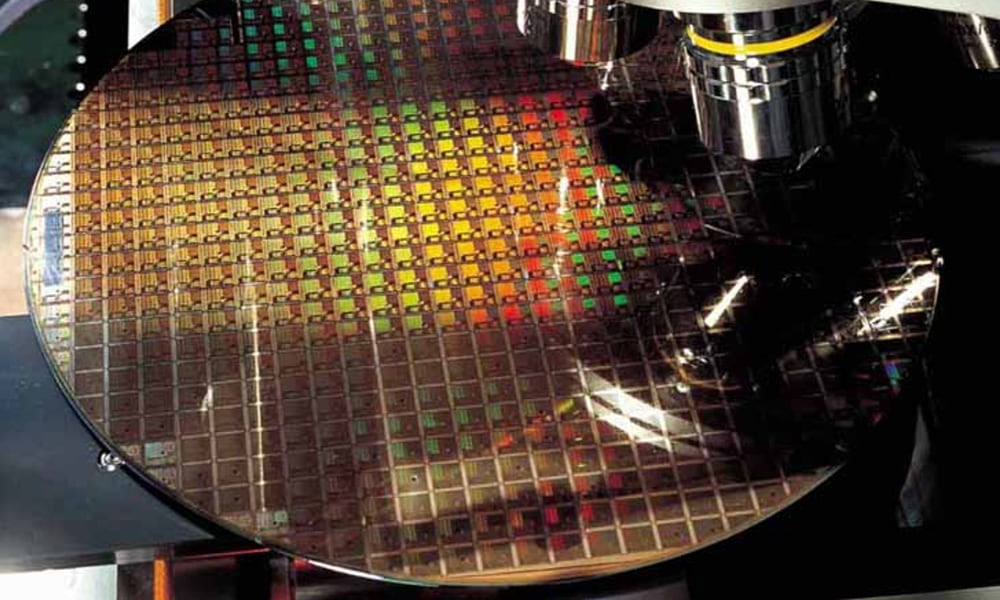TSMC Working on Sub-2nm Chips for the iPhone 20
 TSMC
TSMC
Toggle Dark Mode
The iPhone will reach another major milestone in the next few years as it celebrates its 20th anniversary. While it’s unclear if Apple will do anything special to mark the occasion, the 2028 “iPhone 20” could be set to get one of the most groundbreaking chips that Apple has ever produced.
Last week, Apple chip-making partner TSMC unveiled its next-generation fabrication process that will drop below the 2-nanometer (nm) node size for the first time. Specifically, the new process will adopt 1.4nm tech and represent a “significant advancement from TSMC’s industry-leading N2 process.”
N2 is already bleeding-edge, with a 2nm process expected to be used for Apple’s A20 chips, which will likely go into the iPhone 18 next year. However, the new 1.4nm process is such a leap ahead that TSMC has dropped its traditional “N” designations; the new generation has a rather confusing name for Apple fans: A14.
That’s also the name of the chip used in the iPhone 12, fourth-generation iPad Air, and 2022 iPad. It was manufactured using TSMC’s first-generation 5nm process and was the first 5nm chip on the market.
The 1.4nm chips promise a 15 percent performance boost and a 30 percent reduction in power consumption compared to the 2nm processors. Since those haven’t even gone into production yet, that means we’re looking at a boost of 30 percent in performance and up to 60 percent efficiency over the current crop of 3nm chips used in today’s iPhones, iPads, and Macs. That would make the “iPhone 20” a veritable powerhouse while delivering unprecedented battery life.
To be clear, this announcement from TSMC doesn’t explicitly say that Apple will use the new 1.4nm process. However, considering the close relationship between the two companies and the number of times Apple has been first in line for its new processes, it’s a safe bet that the “A22” chip expected in 2028 is on the list.
After all, Apple has been so eager to stay ahead of the pack in chip technologies that it was also the first to adopt TSMC’s early N3B 3nm process, arguably before it was ready for prime time. The A17 Pro and M3 chips used the N3B node, which turned out to have serious yield problems. It never saw a full rollout in Apple’s Macs, and the iPad Pro skipped it entirely, jumping from the M2 straight to the M4.

The A17 Pro and M3 ended up being resurrected in the 2024 iPad mini and this year’s iPad Air, but they’re not quite the same chips used in the iPhone 15 Pro and the M3 Macs. Different CPU/GPU core configurations suggest that Apple ended up with a lot of “binned” chips from the N3B process and is using its mid-tier iPads to get rid of them.
The A18 and M4 chips are still 3nm processors, but Apple had those fabricated using the more stable N3E process. Reports suggest this year’s A19 and A19 Pro will also use N3E, while the M5 is believed to be moving to N3P, an enhanced version of TSMC’s 3nm node that should provide 5% greater performance and a 5-10% increase in power efficiency. Some reports suggest the A20 may also stick with N3P next year rather than going to the newer N2 process, but we’ll have to wait and see what happens on that front, as it’s far too early to tell.
TSMC also announced an “A16” 1.6nm process last year that’s expected to be ready in 2026. There’s been no word about where that will fit into Apple’s plans, but more recent reports suggest that Apple is being more cautious after its bad experience with the early N3B 3nm process. Reports last year predicted Apple would move to N2 for the A19, but it was said to have delayed those plans due to costs and poor yields from the process as it stood.
Those yields have reportedly improved, with analyst Ming-Chi Kuo sharing in March that trial yields are now hitting well above 70% and that Apple is now satisfied enough with the N2 process to adopt it for next year’s A20.
The base N2 process could also be followed by enhanced versions, similar to what happened with N3B, N3E, and N3P. Still, with the A16 and A14 processes already in the mix, there may be an impetus to shift customers like Apple into the sub-2nm processes.
Technically, the 2027 “iPhone 19” would be the model that marks the 20th anniversary of the iPhone, and the 1.6nm process could be ready for the A21 chip going into that model. Of course, unless Apple chooses to do something unique, like what it did with the 2017 iPhone X, it’s an awkward number to mark an anniversary with. If anything, Apple could choose to let the occasion go by without much fanfare, as it did with the Apple Watch. Even the “iPhone X” was celebrated more as an anniversary edition by fans than by Apple.








